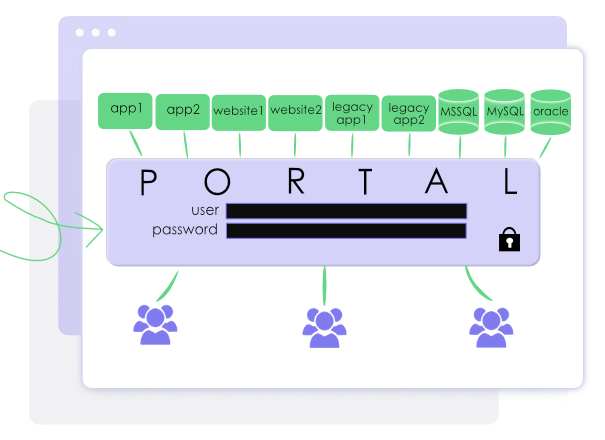A web portal typically has the following features:
- A single point of access: A web portal allows users to access multiple information sources and services through a single user interface, usually a web browser. Users do not need to visit different websites or install different software applications to access the information or services they need.
- A personalized view: A web portal can provide a personalized view of the information and services for each user or group, based on their role, preferences, location, behavior, or other criteria. Users can also configure their own view of the portal by selecting which information sources and services they want to see or use.
- An integrated platform: A web portal can integrate data and applications from various systems and platforms, such as databases, content management systems, enterprise applications, cloud services, social media, etc. This integration can enable data exchange, cross-system functionality, single sign-on, unified search, etc.
- A consistent look and feel: A web portal can provide a consistent look and feel across the different information sources and services, using common design elements, navigation tools, branding, etc. This can enhance the user experience and the identity of the portal owner.
A web portal can serve various purposes, such as providing content discovery, collaboration, communication, e-commerce, self-service, or knowledge management. Some examples of web portals are:
- Content portals: These portals provide access to various types of content, such as news, entertainment, education, etc. They may also offer other services such as email, chat, forums, etc. Examples of content portals are Yahoo!, MSN, AOL, etc.
- E-commerce portals: These portals provide access to online shopping and payment services. They may also offer other services such as product reviews, recommendations, customer support, etc. Examples of e-commerce portals are Amazon.com , eBay , Alibaba , etc.
- Enterprise portals: These portals provide access to enterprise data and applications for internal users (employees) or external users (customers or partners). They may also offer other services such as collaboration tools, workflow management, business intelligence , etc. Examples of enterprise portals are Salesforce.com , SAP NetWeaver Portal , Microsoft SharePoint , etc.
- Government portals: These portals provide access to government information and services for citizens or businesses. They may also offer other services such as online forms , e-voting , e-taxation , etc. Examples of government portals are USA.gov , Gov.uk , EUropa.eu , etc.
- Knowledge portals: These portals provide access to knowledge resources and expertise for specific domains or communities. They may also offer other services such as learning management systems , document management systems , expert systems , etc. Examples of knowledge portals are Wikipedia , Khan Academy , Stack Overflow , etc.
A web portal is a useful tool for providing a single point of access to various kinds of information and services from different sources on the internet or intranet. A web portal can be customized to suit the needs and preferences of different users or groups. A web portal can also integrate data and applications from multiple systems and platforms, creating a seamless and consistent user experience

